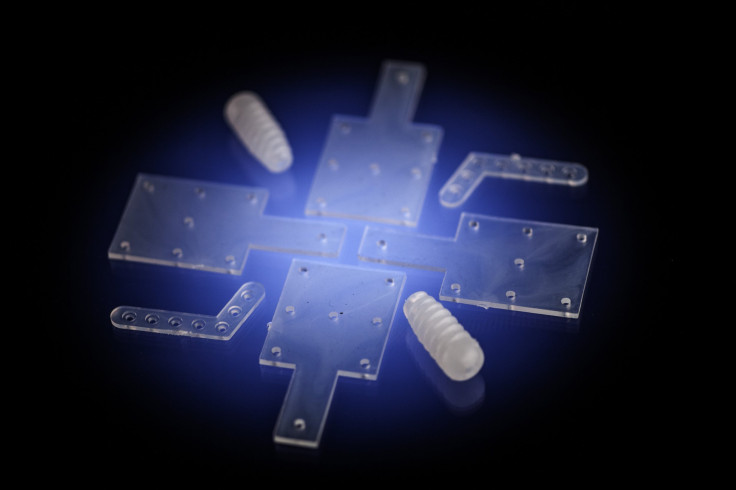Bioglass Bone Grafts Support Regeneration After Fractures

Bioglass bone grafts may soon be a common fix for regeneration of broken bones. A Spanish research team's work paves the way for a type of glass that helps heal fractures, and then safely dissolves when its work is done.
Bioglass, a type of biologically active glass that binds to bone tissue, has long been a promising target for bone regeneration research. Healthy bones can heal themselves after slight damage, but major fractures or degeneration diseases like osteoporosis limit their ability to mend. Fasteners like metal nails can hold fractures together long enough for them to heal, but require two invasive surgeries: one to insert them and a second to remove them after the bone mends. Bioglass bone grafts, with chemical qualities that stimulate cell growth, would remove the need for a second surgery because they dissolve as bone tissue grows back.
However, bioglass bone regeneration has been limited by a number of factors. Bioglass compounds must not only be strong enough to support bone; they also need to be biocompatible, causing no harm to cells in the human body, and biodegradable, able to dissolve into nontoxic compounds over time. Many existing bioactive glass compounds fail the biocompatibility test, forming potentially harmful byproducts that limit their safe use as bone grafts in medicine.
Jose Ramon Sarasua and Aitor Larrañaga, researchers in the materials engineering department of the UPV/EHU-University of the Basque Country in Spain, have been studying this problem. In a new paper published in the journal Polymer Degradation and Stability, they propose a new production method that may render the material stable enough to work as a bioglass bone graft without unexpected adverse reactions.
Bioglass is meant to reinforce another material in biological implants, usually a biodegradable polymer that encourages bone growth but is too soft to support fractured bones on its own. The bioglass/biodegradable polymer compound is tougher than the polymer alone, but a chemical reaction occurs during the process of combining the materials that makes the final compound release potentially harmful byproducts over time.
In their research, Sarasua and Larrañaga propose to increase the stability of the bioglass/biodegradable polymer compound by chemically altering the surface of bioglass with plasma treatment. Plasma, considered one of the four basic states of matter, has similar properties to gases and liquids. In controlled conditions, plasma can alter the surface chemistry of compounds without changing their general properties. Plasma treatment is especially useful in medical technology, neutralizing the surfaces of bioactive materials so they don't cause adverse reactions when implanted in the body, but allowing them to retain their necessary properties.
Sarasua and Larrañaga expect that plasma-treated bioglass will have protective layers that prevent unwanted reactions with biodegradable polymers. The resulting bioglass/biodegradable polymer will be far more biocompatible as a bone graft, with its intended reinforcing and growth-enhancing functions intact.
If the plasma treatment works as well in practice as it does in theory, it will be a major breakthrough for cell regeneration with bioglass bone grafts.
As a result of their research, "these composites that have a biodegradable polymer base are candidates with a bright future in mending broken bones or in regenerating bone defects," said Sarasua in a press statement.



























